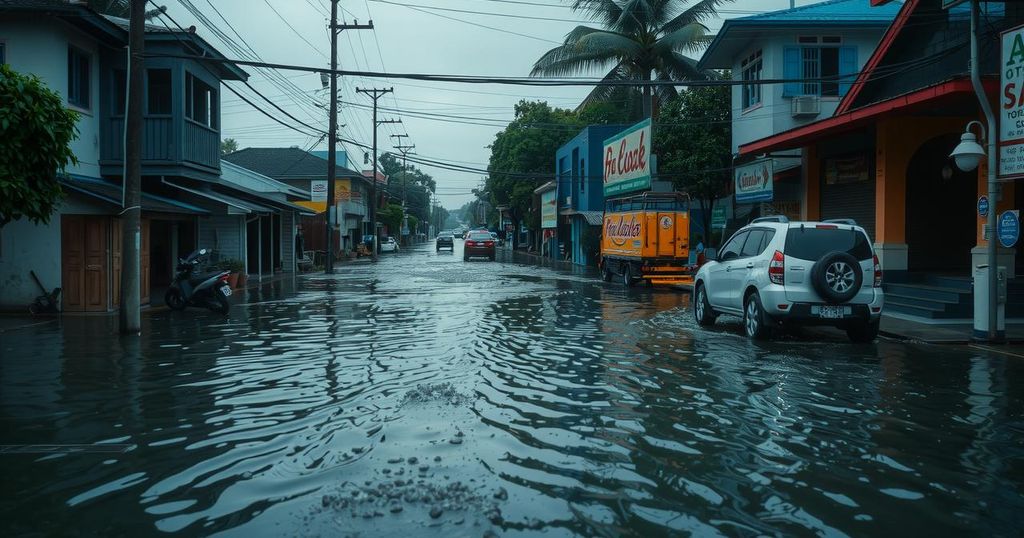Tropical Storm Toraji Causes Severe Flooding in the Philippines with New Storm Expected

Tropical Storm Toraji has led to severe flooding in the Philippines, particularly affecting Isabela and Cagayan provinces, with the evacuation of around 561 families. PAGASA warns of another storm, Ofel, expected to further complicate recovery efforts, highlighting the increasing frequency of storms in the region.
Recent reports depict the aftermath of severe flooding triggered by Tropical Storm Toraji in the Philippines. This storm, which made landfall in Isabela, resulted in significant rainfall, leading to the evacuation of approximately 561 families and the submergence of vast regions, particularly within the provinces of Cagayan and Isabela. With the Cagayan River surpassing critical flood levels, local authorities urged immediate safety measures for residents, particularly in flood-prone areas. Furthermore, the Philippine Atmospheric, Geophysical and Astronomical Services Administration (PAGASA) has announced yet another storm, named Ofel, poised to impact the region shortly. Tropical Storm Toraji, known locally as Nika, struck the northern Philippines on Monday, bringing maximum sustained winds of 80 mph and gusts exceeding 110 mph. It marks the fourth storm to impact the Philippines in a span of three weeks, underscoring the increasing frequency and severity of tropical storms in the area. This system unleashed rainfall ranging between 7 to 15 inches in Cagayan Province, prompting emergency responses and the evacuation of nearly 1,700 individuals across 35 inundated villages. Shelter arrangements for evacuees have been established in various community facilities, such as village halls and schools. The Philippines is no stranger to tropical cyclones, experiencing an average of 20 such storms annually. Recent notable storms preceding Toraji include Tropical Storm Kristine, Super Typhoon Leon, and Tropical Storm Marce, collectively affecting over 4 million people. The impending storm, Ofel, is anticipated to strike Cagayan or Isabela, further complicating recovery efforts in the wake of Toraji’s devastation. The ongoing situation illustrates the urgent need for enhanced disaster preparedness and response strategies in the region.
The Philippines is located in a typhoon-prone region and experiences an average of 20 tropical cyclones each year. In recent weeks, the islands have been severely impacted by consecutive storms, exacerbating the humanitarian situation across various provinces. The storms have not only caused significant environmental damage but also threatened lives, livelihoods, and infrastructure. With each passing storm, the pressure mounts on local authorities and disaster response teams to manage evacuations and provide necessary aid. The increasing frequency of severe weather events due to climate change has heightened concerns regarding the resilience of communities vulnerable to natural disasters in this region.
In summary, Tropical Storm Toraji has wrought havoc in the Philippines, particularly in northern provinces, leading to significant flooding and the urgent evacuation of residents. With the imminent arrival of another storm, Ofel, the situation is expected to worsen, highlighting the importance of robust disaster management protocols. As the nation continues to contend with the ramifications of these natural disasters, there is a pressing need for effective strategies to bolster community preparedness and resilience against future climate-related challenges.
Original Source: www.foxweather.com







